)
From Cloud to Edge
A look into the worldwide market of Cloud Computing with a focus on the new opportunities enabled from Edge Computing.
Cloud computing transformation
After 15 years of steady growth, public attention on cloud computing exploded during 2020’s Coronavirus outbreaks. Companies that had already adopted flexible, cloud-based processes during recent years faced these harsh times with more confidence. Others raced to adopt cloud technologies to enable remote working.
Cloud technology is the ‘behind the scenes’ foundation of today’s and tomorrow’s mainstream services
In 2021 the use of cloud computing technologies has exploded. Across the world, millions of users started to use cloud-based platforms to collaborate, shop online, and entertain themselves. From its outlook on international ICT markets, Reply observed that cloud-related technologies are the key to moving boldly on reacting and restarting activities.
Cloud and Edge computing main trend and market forecast
Reply used its proprietary platform SONAR Trend Platform to spot relevant trends on the cloud market, based on their occurrence within expert media articles, mass media, patents, scientific publications, and worldwide websites.
)
Cloud strategy & transformation
As adoption of cloud-native development and infrastructure increases, a strong trend from businesses towards hybrid multi-cloud strategies can be recognized, connecting public clouds to other public clouds and on-site workloads.
Automation tools and cloud management platforms incorporating AI will be tackling the challenge of managing complex multi-cloud environments.
Cognitive & intelligence cloud
Cloud technology is democratising artificial intelligence such as deep learning, machine learning, robotic process automation, language and vision recognition through more and more AI as a Service applications.
Cloud AI platforms are making intelligence applications usable for smaller businesses on a larger scale, optimising business processes or advancing customer experiences.
)
)
HPC & big data cloud
After the hype surrounding IBM unveiling the first quantum computer for business usage last year, companies including Amazon, Google, Microsoft, and Intel have been demonstrating progress in quantum research and attempts to commercialise quantum services through the cloud.
As big data volumes explode and business use cases for fast and high processing power are constantly increasing, cloud providers are adding high-performance computing (HPC) to their cloud services.
Cloud-native technology stack
Seeing cloud as a critical component of digital transformation, cloud-native computing – deploying applications as microservices packaged in containers and dynamically orchestrating them across platforms – is the strongest wave of digital disruption in the cloud environment.
Cloud automation & orchestration is mainly driven by the rising popularity of Kubernetes, as well as cloud providers introducing these services to achieve compatibility across hybrid environments.
)
Focus on Edge Computing & Distributed Cloud
Edge computing as a relevant part of the OT (Operational Technology) market will grow fast in the next five years. Within the infrastructure market, it’s evident that cloud computing will rule both the Europe-5 and Big-5 cluster, while edge computing will be a fast-growing area in the next 5 years. Germany will be the biggest European market for both cloud computing and edge computing with a growth of 28% (2025 vs 2020). Looking at the Big-5 cluster, figures are forecast to grow for both the public/private hosted cloud and OT infrastructure & edge markets, with an impressive increase up to 60% (2025 vs 2020) in the USA.
SOURCE: TEKNOWLOGY GROUP
Edge computing is reshaping the enterprise computing landscape
Edge computing offers clear advantages if low latency, connectivity, security, privacy and the transmitted data volumes are an issue. The trade-offs are relatively high initial costs and maintenance overheads. On the other side of the scale is cloud computing, where initial costs and maintenance overheads are moderate, but latency, connectivity, and the transmitted data volumes with associated costs can be an issue.
Comparison of the different models of Edge Computing and Cloud Computing
Edge cloud, distributed cloud, and mobile edge computing are hybrid service models that are obtaining relevant investments from hyperscalers and Telco, to answer to a growing interest from the market. Edge cloud sees compute units on-site and dedicated for low latency and high bandwidth, matched with the advantages of a managed environment public cloud-like. Distributed cloud and mobile edge computing are promoted by Telcos in order to offer to customers low latency and new services based on optic fibre and forthcoming 5G networks.
Cloud and Edge computing - main Reply use cases
We collected the most interesting experiences from our Customers and from Reply Partners about designing and adopting architectures that involve edge computing, cloud edge and distributed cloud, often combined with cloud computing.
Edge computing and Open source are the basis of Deutsche Telekom’s new virtualised network infrastructure
Deutsche Telekom is working with Reply to develop the Access 4.0 programme, which takes advantage of open source to create a scalable solution making the control, management, and operation of networks more scalable, flexible and economically sustainable. It promises to eliminate the dependence on ‘closed’ hardware and software vendors, thus contributing to significant savings.
GKN introduced an edge gateway to support its additive manufacturing solution in collaboration with major car manufacturers
GKN and Reply are working on a digital twin that will provide interfaces capable of ‘communicating’ with all phases of a production process and pave the way for an effective industrial automation system. This innovation, which has the potential to radically change the design, production, sales and maintenance of complex products in multiple sectors, is being made possible by edge computing.
Nexive’s mail sorting robots use edge computing to communicate and process data in real-time
E-commerce continues to grow at a rapid pace and to keep up with it, leading Italian delivery company Nexive has used new technology solutions to evolve their service, including swapping manual sorting in their warehouses for robot sorters, working on an edge computing solution. Thanks to these innovations, Nexive will be able to save up to 30% of sorting costs.
The introduction of edge computing allowed Sparkle to renew its global connectivity offering
International voice, data and multimedia services specialist Sparkle is developing an intelligent and distributed infrastructure based on their network of fibre-optic cables and data centres across 34 countries. Aiming to improve the customer experience and be closer to its customer base physically, the Sparkle team are pursuing a model they call ‘pay as you grow’: an economic scalability model capable of adapting to real business needs.
Cloud computing industry applications
Today, being cloud-native is the new norm. Even in traditionalist industries like banking and insurance, the design of architectures not involving cloud technologies is now strongly challenged. In addition, a wide range of use cases can be drawn from edge computing applications across different industries.
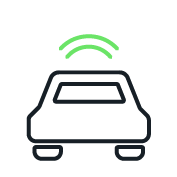
Connected
Vehicles

Digital
Factory
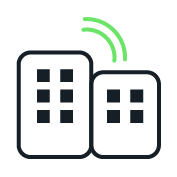
Digital
Government
& Smart Cities

Digital
Healthcare
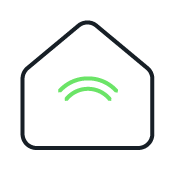
Smart Home
& Buildings

Smart Retail
& CPG
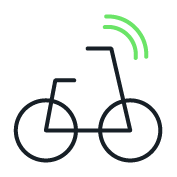
Smart
Transport
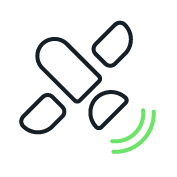
Telco
Reply's Cloud Best Practices
Manufacturing
Including sensors and PLC controllers in an edge computing solution allows manufacturing companies to remotely monitor their processes
IoT technologies enable manufacturing companies to monitor and analyse equipment. However, different systems use different ‘languages’, making data hard to process. Cluster Reply’s unique solution to this challenge, Factor Control Tower, uses a brand-agnostic operating model. It enables companies to remotely monitor and manage their equipment and use the generated data to make informed production and efficiency decisions.
Digital twins help manufacturing companies to intercept and prevent anomalies
Brick Reply, specialising in advanced solutions for manufacturing operation management, has launched a new app based on its proprietary cloud-based suite. Using simulation and artificial intelligence technologies, Shop-floor Digital Twin enables factory staff to take proactive action to correct abnormal situations before they lead to production problems or stoppages.
Reply’s Axulus is helping companies to deploy technology innovations using the Industrial Internet of Things and edge computing
By offering a new way to identify use cases and scale IIoT solutions, customers are able to stay ahead of the technological innovation cycle, generating substantial added value for their business and helping to gain competitive advantage.
Energy & Utilities
Large Utilities are using edge computing and IoT to achieve energy optimisation and launch new services
The Internet of Things and edge computing are key to enabling utilities providers to manage the complex, heterogeneous systems that generate, distribute and store our energy. Sense Reply is helping utilities customers revolutionise their business models and create new business capabilities by implementing edge components, IoT and big data platforms.
The adoption of an edge computing and Industrial IOT solution allows companies to optimise the performance of large photovoltaic plants
With 30 different photovoltaic plants to manage, located in eight different Italian regions, one of the European leading renewable energy groups decided to implement an IoT and edge computing-based solution. Working with Concept Reply, the group has developed an intelligent system that provides detailed information on production and reliability, enabling them to optimise service from the plants and avoid possible disruptions.
Edge computing is the new battleground
While cloud computing will keep growing up to becoming the ultimate standard in ICT architectures, edge computing is the new area where Cloud providers, Telco, and service providers are focusing their innovation investments. At Reply, we believe that edge computing in all its flavours will be an amazing enabler for companies interested in operational efficiency.
)